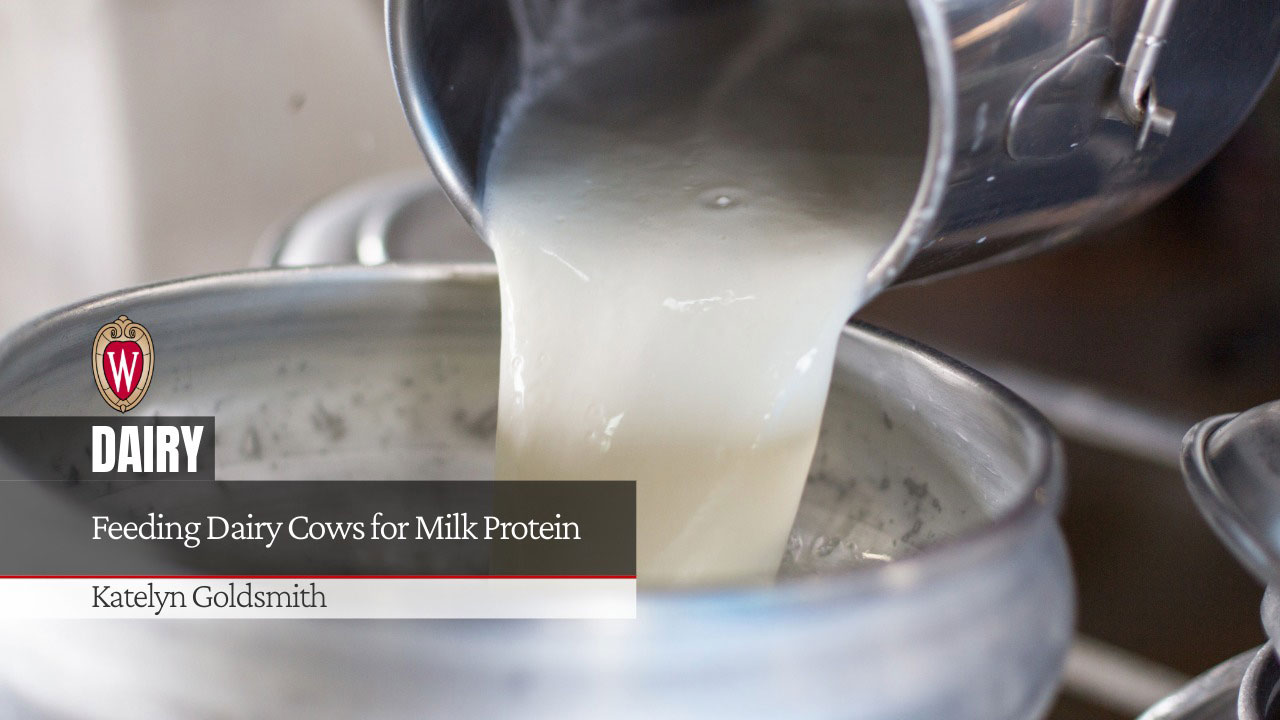
Introduction
Milk composition is a key profit-driver for dairy farms, making it a focus for producers and their advisors. Understanding and optimizing the factors influencing milk fat and protein is important for improving income as well as cow performance and overall efficiency. This article will explore the nutritional aspects that influence milk protein production by reviewing the basics of protein digestion, strategies to support milk protein, and management considerations.
The Basics of Protein Digestion in Dairy Cattle
Protein in the diet does not directly convert into milk protein. Instead, it goes through a series of steps to break the protein down into amino acids (the building blocks of protein) and transport them to the mammary gland to be used for milk protein synthesis.
Step 1
The cow consumes a ration containing protein. Amino acids (which require nitrogen to form) serve as the structural units that make up protein. The term Crude Protein is used to describe the total protein content of feeds and rations including amino acids and nitrogen.
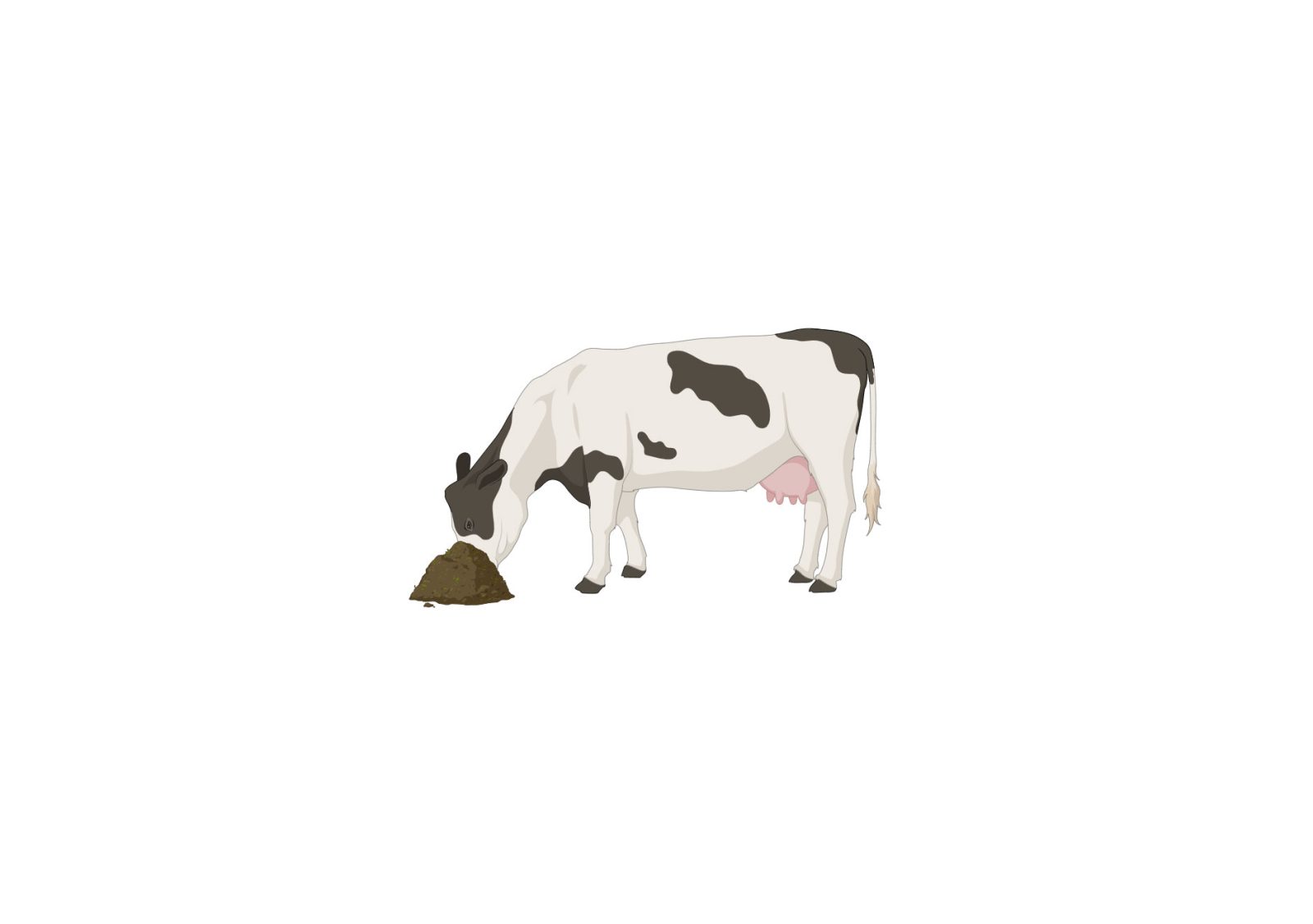
Illustration created using BioRender.
Step 2
The consumed crude protein enters the rumen where most of it is degraded by rumen microbes. The protein digested in the rumen is called Rumen Degradable Protein (RDP). The microbes use amino acids and ammonia from the degradation of RDP to grow, reproduce, and synthesize their own protein which is called microbial protein. Nitrogen is a key component of protein synthesis. Therefore, rumen microbes can also utilize other sources of nitrogen in addition to RDP for microbial protein synthesis. These alternative nitrogen sources, such as urea, are known as Non-Protein Nitrogen (NPN). Not all protein is digested by the rumen microbes. Undigested protein is called Rumen Undegradable Protein (RUP). Additionally, unused nitrogen can be converted to urea, enter the bloodstream, and be reintroduced to the rumen via the bloodstream or saliva. This allows the cow to “recycle” some of the extra nitrogen back to the rumen for microbial use.
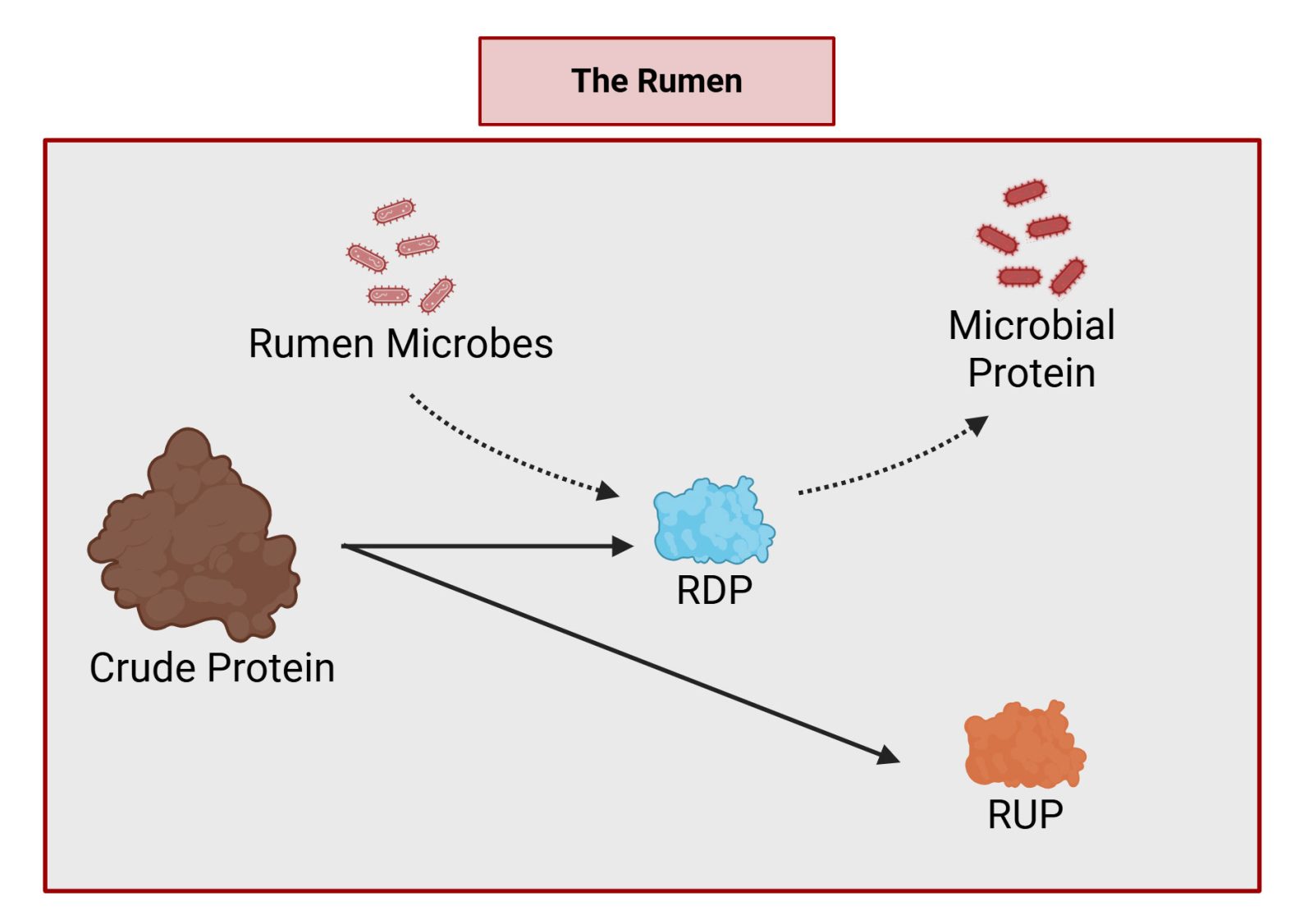
Illustration created using BioRender.
Step 3
As digested feed flows through the rest of the digestive tract, RUP and a portion of rumen microbes flow with it. Eventually, the digesta ends up in the small intestine where both microbial protein and RUP are digested into amino acids. This collection of amino acids in the small intestine is referred to as metabolizable protein.
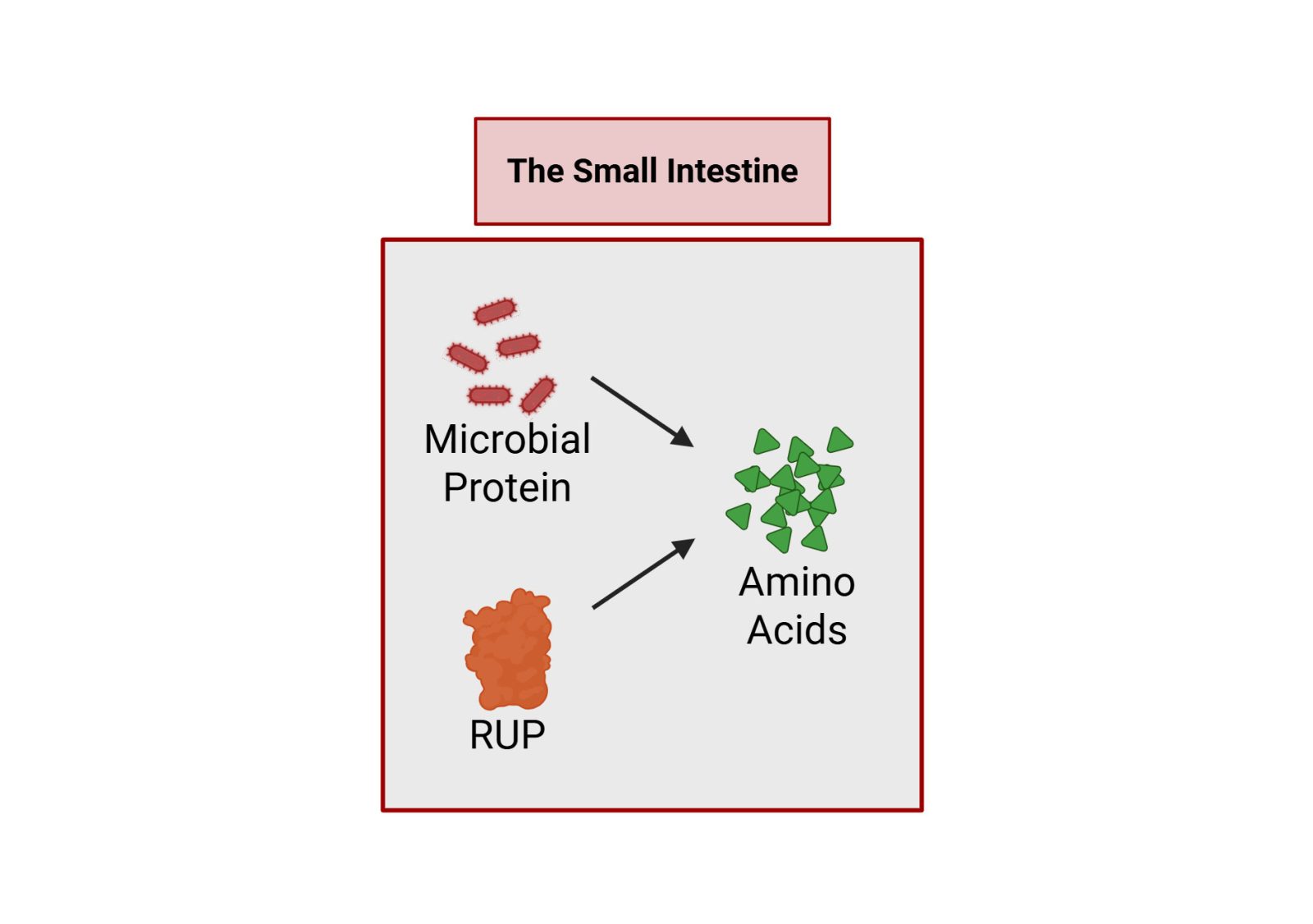
Illustration created using BioRender.
Step 4
Amino acids in the small intestine are absorbed by intestinal cells and transported into the bloodstream. They are then transported to other tissues and the mammary gland to be used for growth, metabolism, or milk protein synthesis. Some of these amino acids will also be converted to urea and be reintroduced to the rumen via the bloodstream or saliva. Excess urea will be excreted in urine or milk (commonly measured as milk urea nitrogen (MUN)).
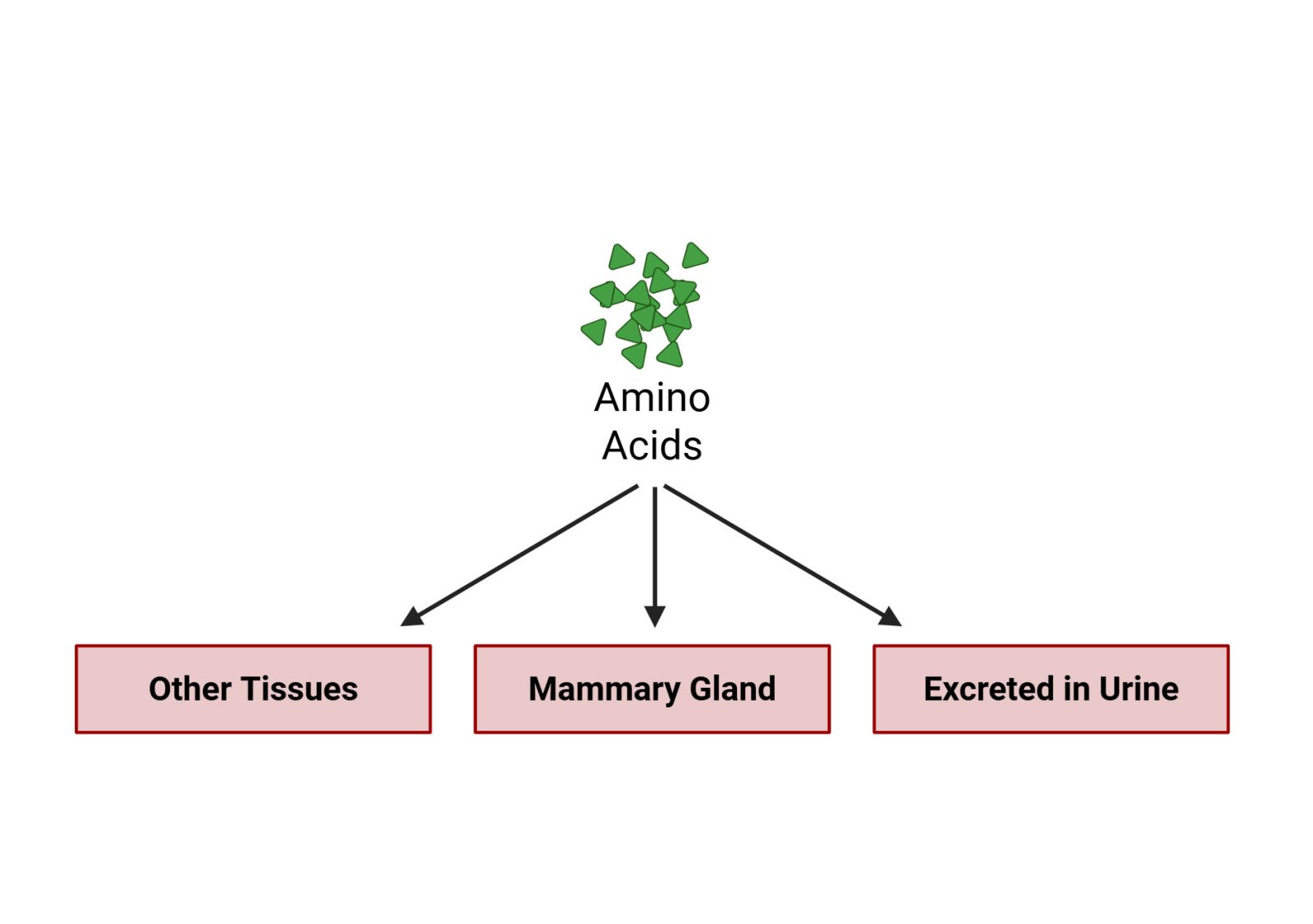
Illustration created using BioRender.
Supporting Milk Protein Production
From a nutritional standpoint, there are two major opportunities to support or improve milk protein production, both focusing on increasing protein available in the small intestine:
- Enhancing microbial protein production.
- Providing adequate amounts of rumen undegradable protein (RUP).
Enhancing Microbial Protein
Microbial protein is the cow’s major source of amino acids, accounting for more than 50% of the protein entering the small intestine (1). Nutrition and management can influence the efficiency of microbial protein production.
- Providing Adequate RDP: Rumen microbes need nitrogen from degradable protein to grow and thrive. If RDP is deficient, microbial growth and feed digestion suffer, reducing both microbial protein yield and overall feed and nitrogen efficiency. It is generally recommended that about 10% of diet dry matter is RDP (2). Because RDP sources are often less costly than RUP sources, maximizing microbial protein is usually economically advantageous. However, excess RDP can elevate nitrogen excretion and reduce efficiency.
- Feed Non-Protein Nitrogen (NPN) Wisely: Nitrogen is essential for amino acid and protein formation. Therefore, feeding non-protein nitrogen sources like urea can aid microbial protein synthesis. However, excess NPN supply can increase nitrogen losses and reduce feed efficiency. At very high intakes, NPN can cause ammonia toxicity. A common guideline is to limit urea supplementation to no more than 0.3-0.4 lb per cow per day (3, 4).
- Don’t Short the Rumen of Energy: Microbes require both protein and energy to grow. Providing too little rumen available energy, whether in the form of starch or sugars, can stunt microbial growth and protein synthesis. Diets should be formulated to provide balanced and adequate amounts of both rumen degradable carbohydrates and protein.
- Maintain a Healthy Rumen: Rumen microbial populations thrive when pH and nutrient balance are stable. Adequate fiber and starch levels in well-balanced diets are essential to prevent rumen upset, enhance microbial growth, and support milk protein yield.
- Encourage Intakes: Greater dry matter intakes increase both protein and energy supply to the cow, indirectly supporting milk and milk component production. Management practices that maintain cow comfort, feed access, and consistent feed availability all play a role in promoting intake.
Providing Rumen Undegradable Protein
RUP supplies an additional source of amino acids directly to the small intestine. When balanced with adequate RDP, RUP can improve overall protein efficiency of the cow.
- RUP in Feeds: Common protein sources like expelled soybean meal, distillers’ grains, and blood meal can be good sources of RUP. When evaluating feeds, consider not only the RUP content, but also the digestibility of that RUP. If RUP passes through the small intestine undigested, it does not benefit the cow. It is generally recommended that 6.2-7.5% of diet dry matter be provided as RUP (2).
- Rumen-Protected Amino Acids: Feed technologies allow certain amino acids to be protected from rumen degradation and delivered directly to the small intestine. This enables nutritionists to begin formulating diets based on individual amino acids. Amino acid balancing can improve protein efficiency and milk protein yield, but it does often increase ration costs.
Management Considerations for Milk Protein
When evaluating nutrition and milk protein production, keep the following practices in mind.
- Be Aware of Seasonal Trends: National milk production data shows an annual rhythm in milk protein production with lowest yields in the summer and highest yields in the winter. With this in mind, changes in milk protein production should be evaluated in the context of your farm’s seasonal production trends.
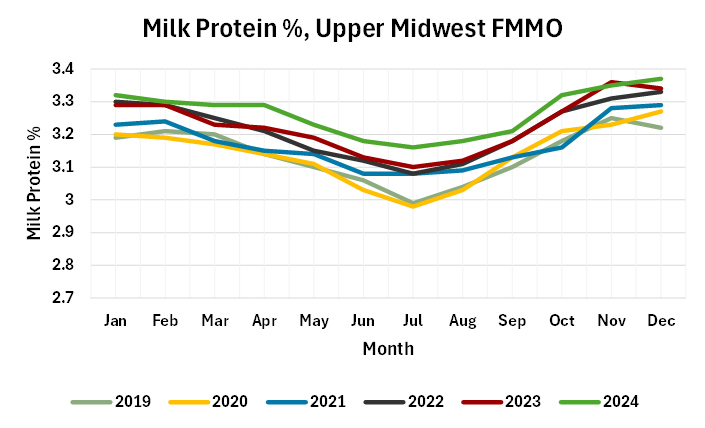
- Regularly Test Forages and Feedstuffs: Forages and farm-grown feed are often variable in protein content and digestibility. Routine testing of feeds for protein measures including RDP and RUP is essential. Spot-checking purchased commodities, such as distillers’ grains or soybean meal, can help monitor if variability arises that may affect diet formulation.
- Monitor Milk Urea Nitrogen (MUN): MUN levels provide insight into protein supply and efficiency. Values between 8-14 mg/dL generally fall into recommended ranges, but this can vary by farm and diet (5). High MUNs may be more commonly seen in herds feeding lush pasture, high amounts of alfalfa silage, or protein rich diets with limited starch. Tracking herd-level trends and responses to ration changes is often more useful than focusing on a single, hard cutoff value.
- Factor in Economics: Protein is one of the most expensive nutrients in dairy rations. Balancing biological needs with cost-effectiveness is critical. Sometimes the best ration from a biological viewpoint is not the most profitable, and vice versa. Farmers should work with their nutritionist to find rations that fit the optimal balance.
Summary
By understanding and focusing on strategies and management practices that support the creation of microbial protein and efficient protein digestion in the small intestine, you can take proactive steps to optimize milk protein in your herd.
Author

Katelyn Goldsmith
Dairy Outreach Specialist– In her role as a statewide Dairy Outreach Specialist, Katelyn connects research with practical farm management practices to create educational programming addressing the needs of Wisconsin dairy producers.
Reviewers
References
- Schwab, C.G., & Broderick, G.A. (2017). A 100-year review: Protein and amino acid nutrition in dairy cows. Journal of Dairy Science, 100:10094-10112. https://doi.org/10.3168/jds.2017-13320
- NASEM. (2021). Nutrient requirements of dairy cattle: Eighth revised edition. The National Academies Press, Washington, DC.
- Kertz, A.F. (2010). Review: Urea feeding to dairy cattle: A historical perspective and review. The Professional Animal Scientist 26:257-272. https://doi.org/10.15232/S1080-7446(15)30593-3
- Linn, J., Hutjens, M., Shaver, R., Howard, T., Kilmer, L. (2021). Formulating dairy cow rations. University of Minnesota Extension. Access online at https://extension.umn.edu/dairy-milking-cows/formulating-dairy-cow-rations
- Ishler, V. (2023). Interpretation of Milk Urea Nitrogen (MUN) Values. Penn State Extension. Access online at https://extension.psu.edu/interpretation-of-milk-urea-nitrogen-mun-values


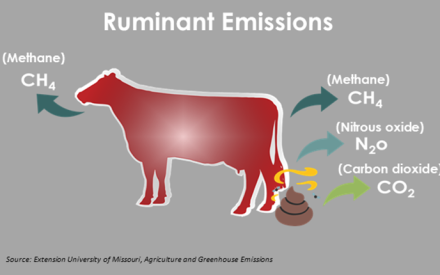 Feeding for efficiency: Dietary impacts on greenhouse gas production
Feeding for efficiency: Dietary impacts on greenhouse gas production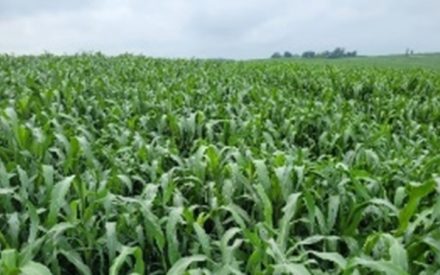 Cocktail Forage Mix Yield, Quality, and Use in Lactating Cow Diets
Cocktail Forage Mix Yield, Quality, and Use in Lactating Cow Diets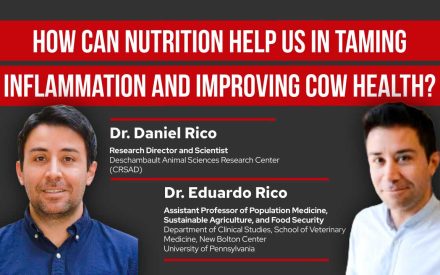 ▶️ Watch: How Can Nutrition Help Us in Taming Inflammation and Improving Cow Health
▶️ Watch: How Can Nutrition Help Us in Taming Inflammation and Improving Cow Health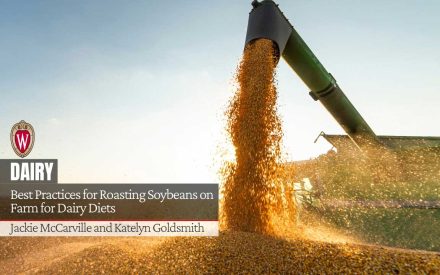 Best Practices for Roasting Soybeans on Farm for Dairy Diets
Best Practices for Roasting Soybeans on Farm for Dairy Diets


